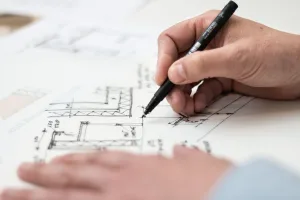A building inspection report format is designed to show the condition of the building being examined. It has been a standard in the industry and has helped to establish professionalism in detailing the building’s current status. Such inspection reports are sent to clients/customers/speakers and other interested parties. With its purpose of facilitating access by various individuals and organizations to an up-to-date overview of the building’s condition, this format helps in building an impression of the inspector’s credibility, which is vital for building trustworthy relationships. This inspection report form is composed of five major parts.
Part One: An overview of your local building industry. The first section of this format describes the building industry you are researching using references that are based on your current geographical location. This includes the names of national, regional and local building organizations. It’s a good idea to inspect a building in your country or regional area, as these reports are often made locally. It is important that the industry you are researching be represented in the region.
Part Two: Professionally Speaking. This second section highlights the qualifications of inspectors. This section includes the name, position, department, and awards for the inspector. If the inspector has specialized training or knowledge on a particular topic, this section will be very helpful for potential clients.
Part Three: Reference Materials. Experts in the field are familiar with technical writing resources such dictionaries and online encyclopedias. It’s a good idea to gather some of these references, as well as contact the offices of the U.S. patent and Trademark Office (USPTO) for trademark materials related to your project. A few other sources of information include books on building construction, such A Guide to Architect Terms in Home Builders & Contractors, by National Construction Publishers Association, Inc., Building Standards, Inc., Building Standards, Inc., and home repair publications, as well as standards manuals/handbooks published by the International Code Council for Engineering Practices, ICCEP.
Part 4: Methodology. This section will provide information about the methods your inspector uses to inspect a particular building. Here you will learn about codes, terms used by your company, and other information that is specific to your area.
Part Five: Conclusion. After going through the entire report, there are five things you should consider. The first is what should be done next. Some associations require that a final written report be submitted (typically to the building manager) with a suggested maintenance and remediation schedule. Others, such as the NHER (National House-Building Council) require an evaluation by a third-party independent inspector.
Your report will provide information to the building inspector regarding the problem areas. The inspector will then assess the severity of each problem, i.e. The inspector will determine whether the problem is a safety issue or structural concern and how severe it is. Your report also includes a recommendation about remedial steps, including scheduling a visit by the building inspector, collecting additional information from the building inspector, contacting the owner, etc. Your final paragraph includes information about the association’s process to address concerns regarding code violations, complaints concerning deficient design, as well as any corrective actions taken after the review.
When preparing a Pre Purchase Building Inspections Melbourne report, it is important to include all pertinent information. Make sure to address all items that were addressed in the Code, whether they were cited in your report or not. In the same way, ensure that your report addresses all issues that are not addressed in Code. Keep in mind that your final document is only an opinion and should not be used as a basis for enforcement actions.


